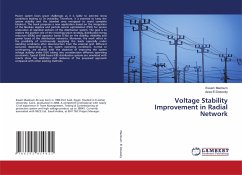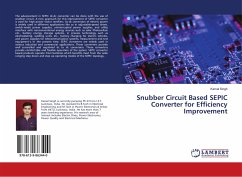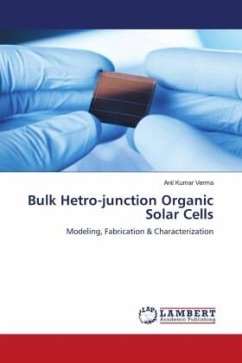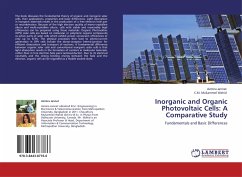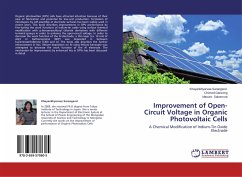
Improvement of Open-Circuit Voltage in Organic Photovoltaic Cells
A Chemical Modification of Indium-Tin Oxide Electrode
Versandkostenfrei!
Versandfertig in 6-10 Tagen
27,99 €
inkl. MwSt.

PAYBACK Punkte
14 °P sammeln!
Organic photovoltaic (OPV) cells have attracted attention because of their ease of fabrication and potential for low-cost production. Formation of monolayers by self-assembly at electrode surfaces has been widely used in recent years. This book describes improvements in OPV performance by fine-tuning the work functions of indium-tin oxide using surface chemical modification with p-benzenesulfonyl chloride derivatives with different terminal groups in order to enhance the open-circuit voltage. In order to decrease the work function of the Al electrode, a thin layer (ca. 10 nm) of Alq3 or bathoc...
Organic photovoltaic (OPV) cells have attracted attention because of their ease of fabrication and potential for low-cost production. Formation of monolayers by self-assembly at electrode surfaces has been widely used in recent years. This book describes improvements in OPV performance by fine-tuning the work functions of indium-tin oxide using surface chemical modification with p-benzenesulfonyl chloride derivatives with different terminal groups in order to enhance the open-circuit voltage. In order to decrease the work function of the Al electrode, a thin layer (ca. 10 nm) of Alq3 or bathocuproine (BCP) was deposited in between buckminsterfullerene (C60) and Al. The book also describes the further enhancement in Voc, lithium deposition on Al using lithium benzoate was attempted to decrease the work function of the Al electrode. The mechanism for improvements by enhanced Voc in OPVs has been discussed in detail.



